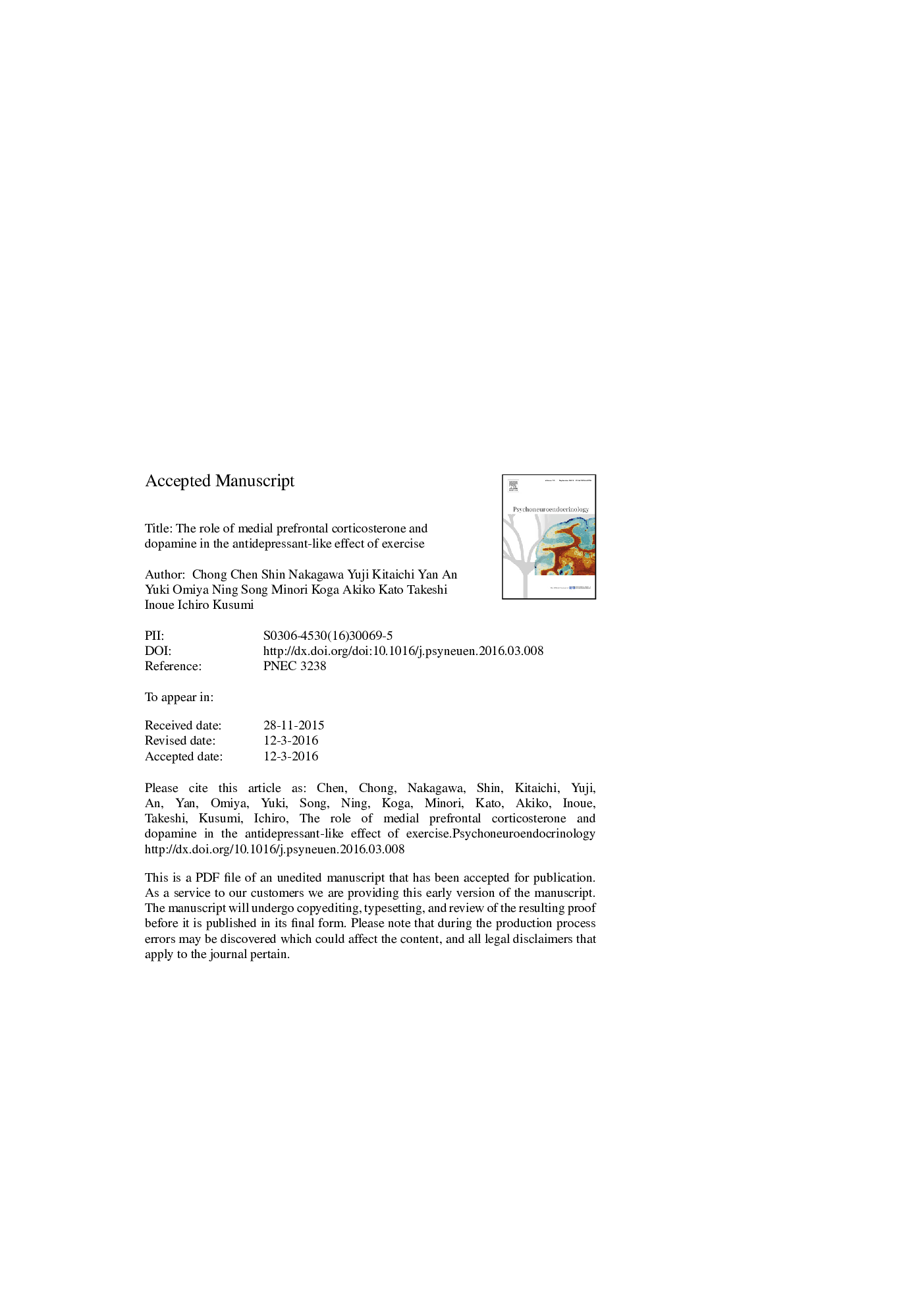| Article ID | Journal | Published Year | Pages | File Type |
|---|---|---|---|---|
| 6818088 | Psychoneuroendocrinology | 2016 | 34 Pages |
Abstract
Despite the well-documented beneficial effect of exercise on stress coping and depression treatment, its underlying neurobiological mechanism remains unclear. This is further complicated by a 'side effect' of exercise: it increases basal glucocorticoid (CORT), the stress hormone, which has been shown to be a mediator linking stress to depressive disorders. Here we show that three weeks of voluntary wheel running reduced rats' immobility in the forced swim test (FST), an antidepressant-like effect. Monitoring extracellular fluids in the medial prefrontal cortex PFC (mPFC) using microdialysis we found that, wheel running was associated with higher baseline CORT, but lower FST-responsive CORT. Further, wheel running resulted in a higher dopamine (DA) both at baseline and following FST. Interestingly, the antidepressant-like effect of wheel running was completely abolished by intra-mPFC pre-microinjection of a D2R (haloperidol) but not D1R (SCH23390) antagonist, at a dose that does not affect normal rats' performance in the FST. It suggests that exercise exerts antidepressant-like effect through upregulated DA and in a D2R dependent way in the mPFC. Importantly, the antidepressant-like effect of wheel running was also abolished by intra-mPFC pre-microinjection of a GR antagonist (RU486). Finally, intra-mPFC pre-microinjection of RU486 also downregulated the originally elevated basal and FST-responsive DA in the mPFC of exercise rats. These results suggest a causal pathway linking CORT, GR, DA, and D2R, to the antidepressant-like effect of exercise. In conclusion, exercise achieves antidepressant-like effect through the CORT-GR-DA-D2R pathway and that the increased basal CORT by exercise itself may be beneficial rather than detrimental.
Related Topics
Life Sciences
Biochemistry, Genetics and Molecular Biology
Endocrinology
Authors
Chong Chen, Shin Nakagawa, Yuji Kitaichi, Yan An, Yuki Omiya, Ning Song, Minori Koga, Akiko Kato, Takeshi Inoue, Ichiro Kusumi,
